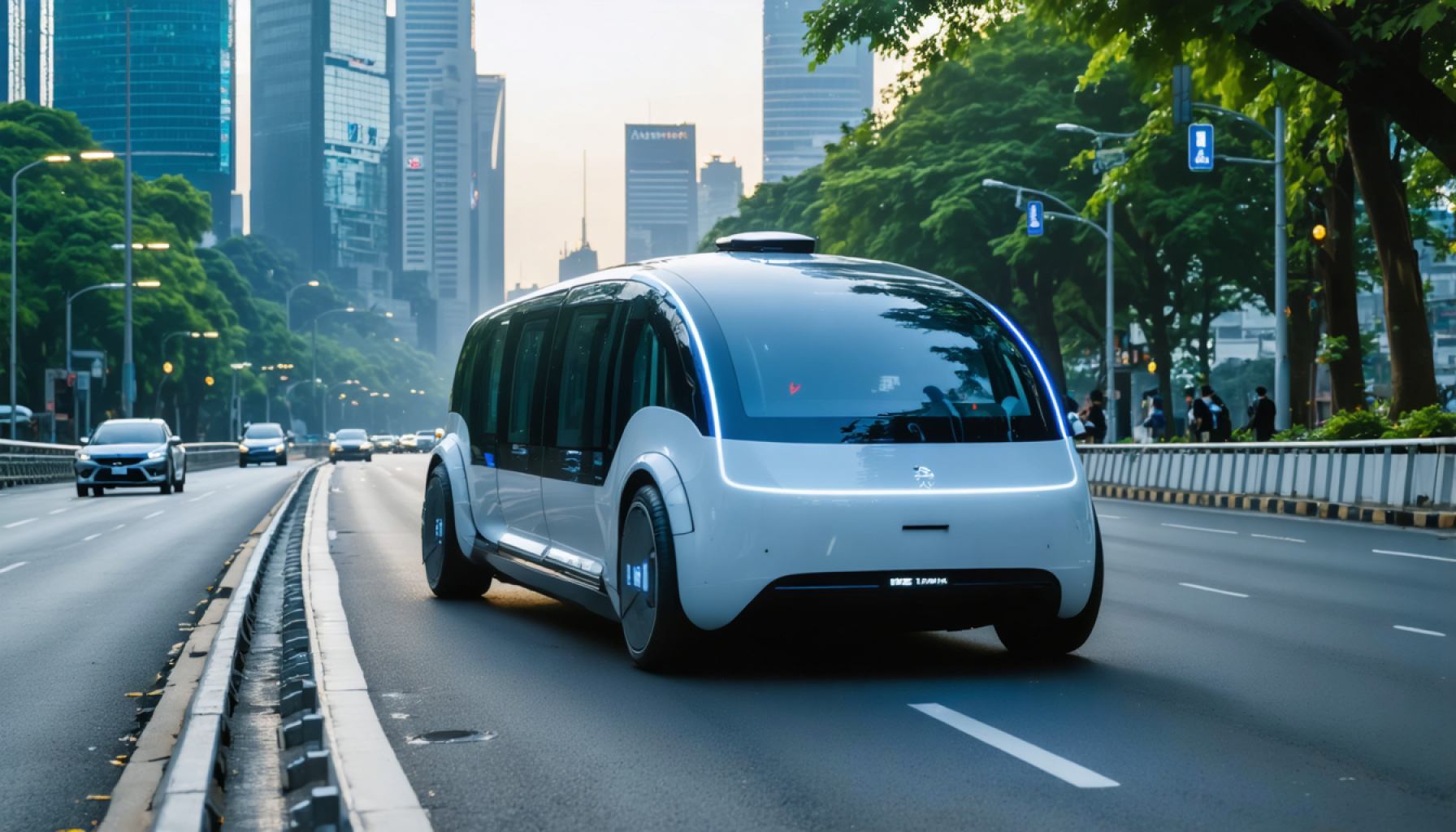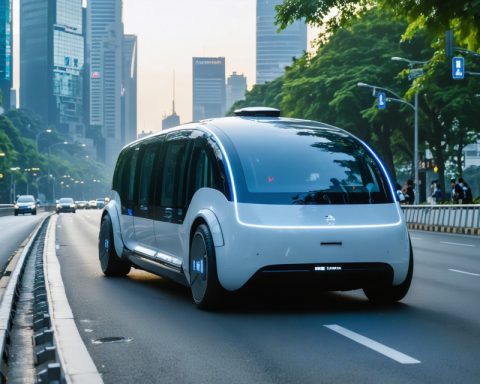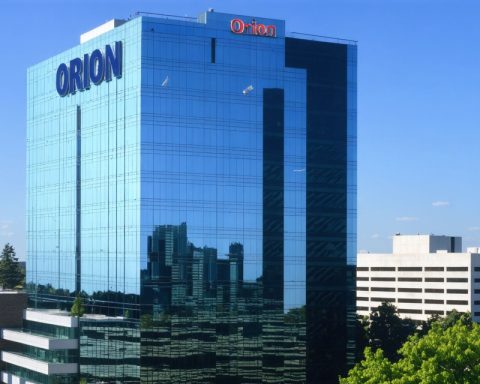- Pony AI’s stock surged by 42.7% after launching its robotaxi fleet in Guangzhou, China, marking a milestone in autonomous urban transportation.
- The company’s autonomous vehicles now connect major locations such as Guangzhou Baiyun International Airport and Guangzhou South Railway Station.
- Pony AI is the first to receive approval for robotaxis in Guangzhou, setting new standards in urban mobility and capturing public imagination.
- Expanding beyond urban areas, Pony AI also gained approval for testing self-driving trucks on highways, eyeing dominance in both city and cross-country transport.
- The company’s market cap reached $8.3 billion post-IPO, reflecting its significant potential amid China’s supportive regulatory environment.
- Investors are keen not just on current achievements but on Pony AI’s future in autonomous technology, driven by innovation and growth prospects.
Pony AI’s journey to the forefront of autonomous driving took a remarkable turn this week, fueling investor excitement and sending its stock soaring by 42.7% in record time. The company, a key player in self-driving technologies, made headlines as it unleashed its fleet of robotaxis in the bustling metropolis of Guangzhou, China.
Why the buzz? Picture a sprawling city where commuters seamlessly glide from the city center to major travel hubs like Guangzhou Baiyun International Airport and Guangzhou South Railway Station—all without a human behind the wheel. Pony AI’s robotaxi service isn’t just a vision; it’s now a reality connecting people across this vibrant cityscape. Being the first to receive this pivotal approval, Pony AI has not only captured the imagination of the public but also set a new standard in urban mobility.
But the road doesn’t end here. While their robotaxis captivate urban commuters, Pony AI is accelerating into the world of autonomous trucking. Earlier in the year, they cleared a major regulatory hurdle, winning approval for testing self-driving truck fleets on highways linking China’s major provinces. This advancement hints at a future where Pony AI vehicles could dominate both city streets and cross-country thoroughfares.
What does this mean for investors? With a market cap now standing impressively at $8.3 billion, Pony AI has seen a meteoric rise since its November IPO. The swift gains reflect both the potential and the volatility inherent in the tech world. Yet, China’s supportive regulatory framework suggests Pony AI might drive toward even greater accomplishments.
For investors and enthusiasts alike, Pony AI isn’t just about where autonomous technology is today. It’s about where it’s heading tomorrow—a journey paved with innovation and promise.
How Pony AI is Revolutionizing Autonomous Transport: Ride Into the Future Today
The Future of Mobility: Exploring Pony AI’s Breakthrough in Autonomous Transportation
Pony AI’s remarkable leap in autonomous driving technology has pushed it to the forefront of urban mobility innovation. Its stock skyrocketing by 42.7% illustrates the significance of its recent achievements in Guangzhou and the promising future that investors are banking on. Here’s a deeper dive into what this means for consumers, the industry, and investors alike.
How-To Steps & Life Hacks: Navigating the Robotaxi Experience
1. Download the App: Start by downloading the Pony AI app. It’s the main interface for booking rides, viewing service areas, and tracking your robotaxi.
2. Book a Ride: Enter your pickup and destination locations. The app will notify you of the estimated pickup time.
3. Safety First: Familiarize yourself with the safety features, such as emergency stop buttons and communication lines to Pony’s support team.
4. Experience the Ride: Sit back and enjoy the ride. Cameras and sensors ensure a smooth and safe journey.
5. Feedback: After the ride, provide feedback to help improve the service.
Real-World Use Cases
– Daily Commuters: Easily travel between home, work, and other busy hubs like Guangzhou Baiyun International Airport.
– Tourists: Seamlessly explore the city without the hassle of navigating public transport or language barriers.
– In-City Business Travel: Efficiently move across various meeting locations within the bustling urban surroundings without needing to drive.
Market Forecasts & Industry Trends
The autonomous vehicle market is projected to reach $556.67 billion by 2026 (Allied Market Research), with significant interest from major global tech firms and automakers. Pony AI, supported by favorable regulation and robust technology advancements, is positioned to be a key player in Asia and beyond.
Reviews & Comparisons
– Performance: Compared to Waymo and Cruise, Pony AI’s technology is specifically tailored to the unique infrastructure and traffic patterns of Asian megacities.
– Cost: Similar to traditional rideshare apps, yet competitive considering the novelty and technology behind the service.
Controversies & Limitations
– Safety Concerns: Autonomous technology still faces skepticism regarding reliability and potential system failures. Continuous advancements and rigorous safety testing are crucial.
– Regulatory Challenges: Differing regulations across regions could hinder expansion.
Features, Specs & Pricing
– Robotaxi Tech Specs: Equipped with LiDAR, cameras, and advanced AI for navigation and obstacle detection.
– Pricing: Competitive with traditional taxi services, aiming to incentivize early adoption and familiarity with autonomous technologies.
Security & Sustainability
– Data Security: Utilizes encrypted data transmission to protect user information and ride details.
– Environmental Impact: Electric-powered fleet contributes to reducing urban pollution.
Insights & Predictions
Pony AI will likely expand its geographic coverage and possibly introduce new vehicle types to suit diverse urban dynamics. Partnerships with local municipalities and businesses may accelerate adoption and integration within smart city frameworks.
Tutorials & Compatibility
– Vehicle Compatibility: Primarily focuses on larger passenger vehicles for urban navigation; future expansions may include smaller pods or buses.
– Software Compatibility: Works seamlessly with major mobile operating systems, ensuring ease of access for most users.
Pros & Cons Overview
Pros:
– Cutting-edge technology
– Enhanced urban mobility
– Strong market positioning
Cons:
– Limited service areas
– Potential regulatory uncertainties
Actionable Recommendations
– Investors: Pony AI represents a high-growth opportunity, but temper excitement with due diligence given market volatility.
– Consumers: Experience the future of commuting firsthand. Early adoption provides insight into technology pushing society forwards.
– Tech Enthusiasts: Follow trends and updates from Pony AI to understand broader industry shifts in autonomous vehicles.
For more updates on Pony AI and the autonomous vehicle industry, consider visiting Pony AI.









